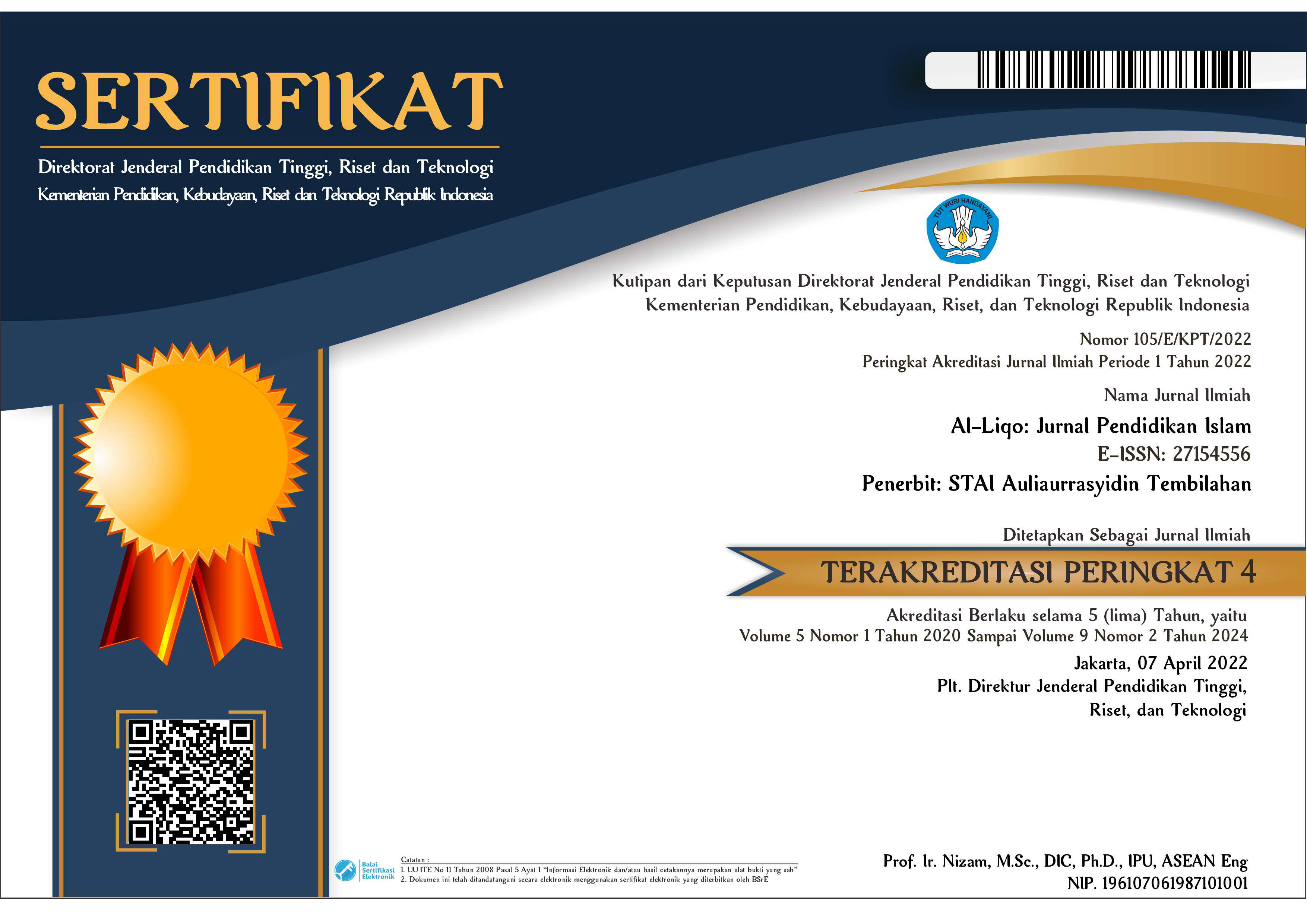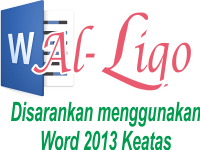Metode Mengajar dalam Pendidikan Menurut Nur Uhbiyati dan E. Mulyasa
DOI:
https://doi.org/10.46963/alliqo.v5i02.244Keywords:
Methods, Teaching, EducationAbstract
The learning method is a strategy or technique in delivering teaching and learning activities in the classroom that is applied by teachers so that the set of goals can be achieved objectively. The learning process requires a variety of special methods which in essence can support the achievement of effective and efficient learning objectives. Teachers need to know and learn appropriate teaching methods to convey material to students. Teaching methods are practiced at the time of teaching and made as attractive as possible so that students can receive lessons easier. Additionally, the teacher must also know the advantages and disadvantages of the methods to reduce difficulties during teaching and learning. This research was formulated using the method by Nur Uhbiyati and E. Mulyasa.
Downloads
References
E. Mulyasa. (2005). Menjadi Guru Profesional Menciptakan Pembelajaran Kreatif dan Menyenangkan. Bandung: Remaja Rosdakarya.
Nazir, M. (2005). Metode Penelitian. Bogor Selatan: Ghalia Indonesia.
Uhbiyati, N. (1997). Ilmu Pendidikan Islam 2. Bandung: Pustaka Setia.
Lexy J. Moleong. (2013). Metodologi Penelitian Kualitatif. Bandung: Remaja Rosdakarya. Cet. 31
Riduwan. (2013). Skala Pengukuran Variabel-Variabel Penelitian. Bandung: Alfabeta. Cet. Ke-10
Riduan. (2015). Belajar Mudah Penelitian Untuk Guru, Karyawan Dan Peneliti Pemula. Bandung: Alfabeta.
S. Nasotion. (2002). Metode Research Penelitian Ilmiah. Jakarta: Bumi Aksara.
Downloads
Published
Issue
Section
License
Authors who publish with this journal agree to the following terms:
1. Copyright on any article is retained by the author(s).
2. The author grants the journal, right of first publication with the work simultaneously licensed under a Creative Commons Attribution shareAlike 4.0 International License that allows others to share the work with an acknowledgment of the work’s authorship and initial publication in this journal.
3. Authors are able to enter into separate, additional contractual arrangements for the non-exclusive distribution of the journal’s published version of the work (e.g., post it to an institutional repository or publish it in a book), with an acknowledgment of its initial publication in this journal.
4. Authors are permitted and encouraged to post their work online (e.g., in institutional repositories or on their website) prior to and during the submission process, as it can lead to productive exchanges, as well as earlier and greater citation of published work.
5. The article and any associated published material is distributed under the Creative Commons Attribution-ShareAlike 4.0 International License







2.png)



